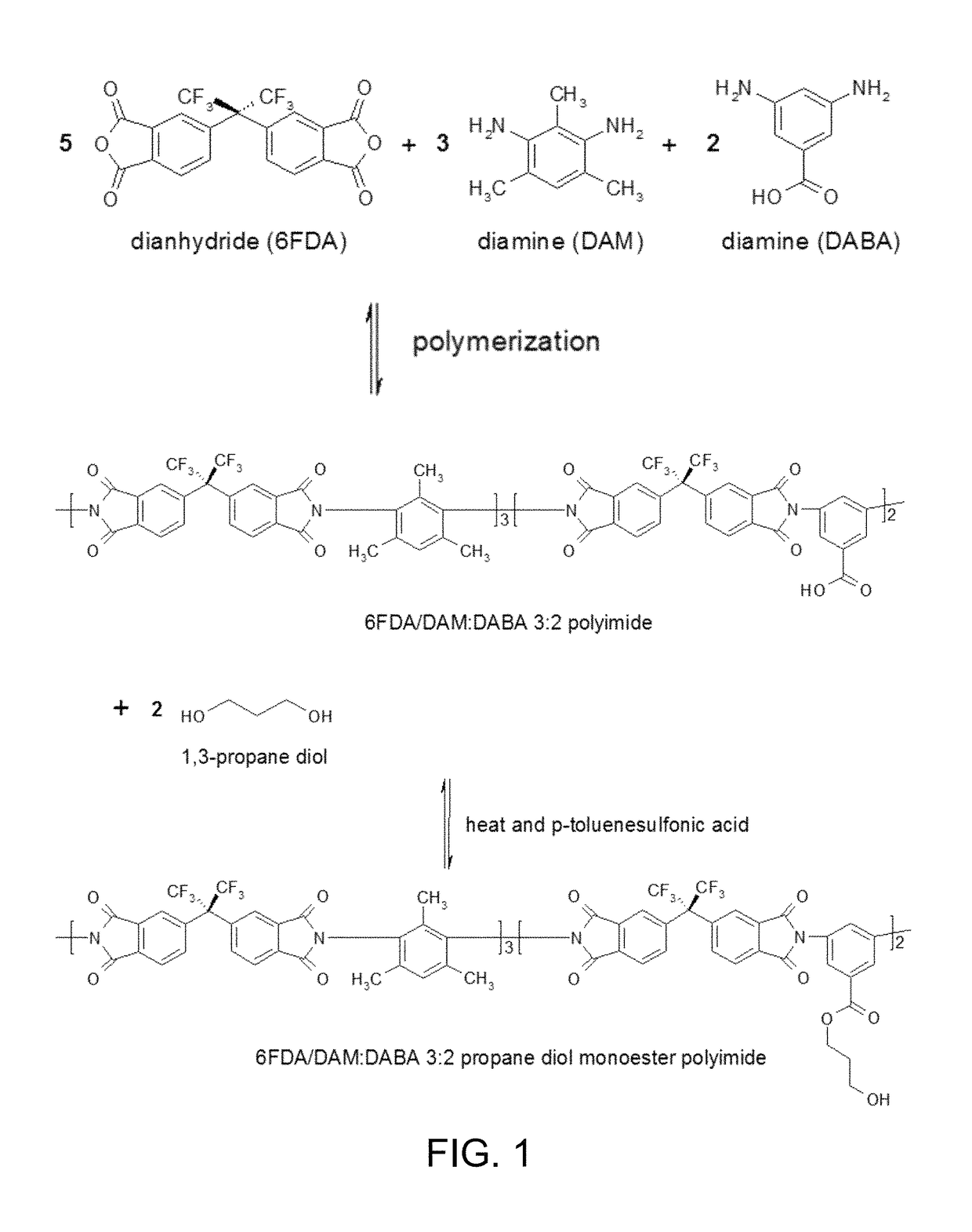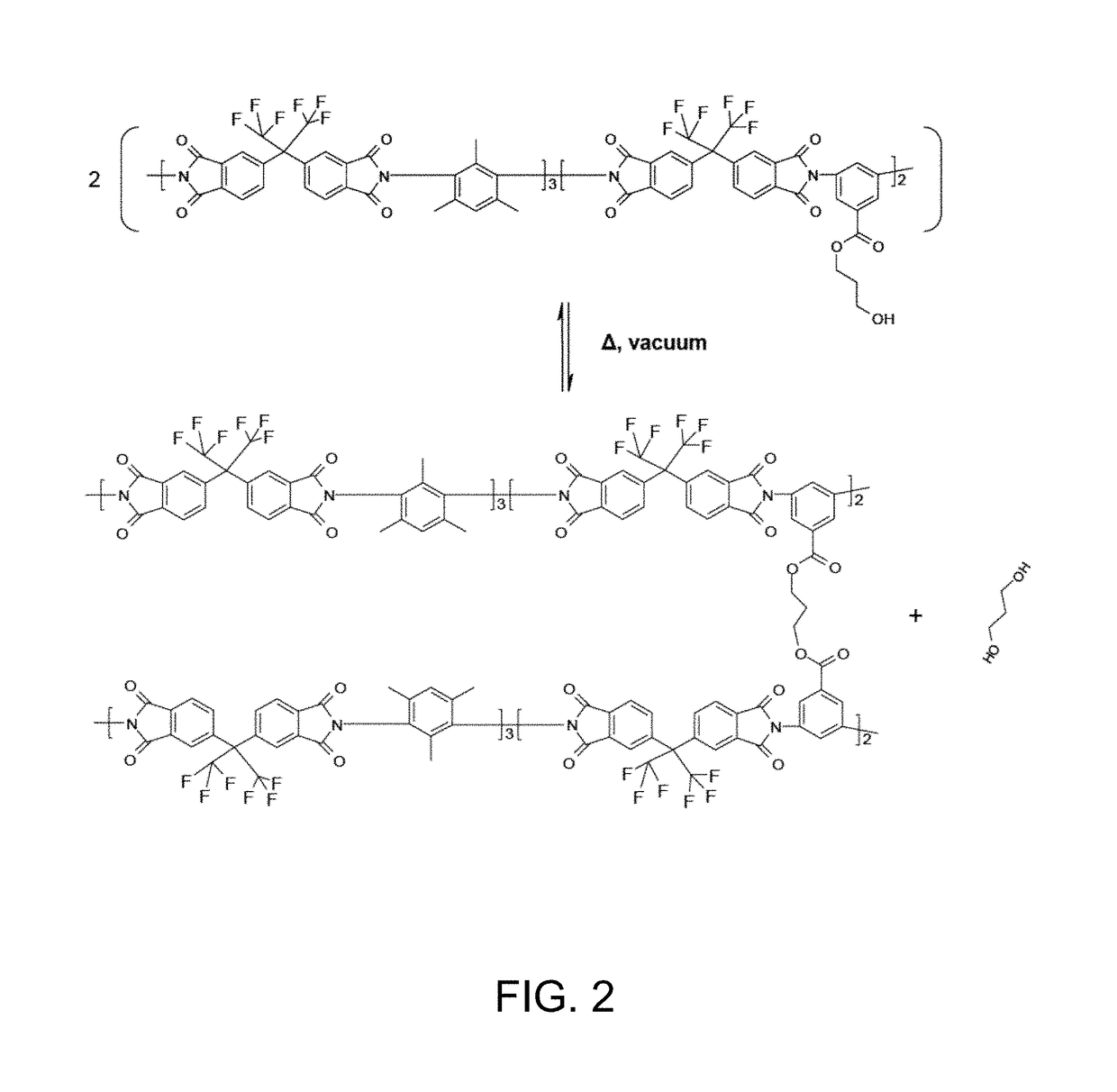Composite hollow fiber membranes useful for CO2 removal from natural gas
a composite hollow fiber and natural gas technology, applied in the direction of tubular articles, gaseous fuels, climate sustainability, etc., can solve the problems of increasing water content, undesirable addition of water removal steps, and natural gas always requiring dehydration, and achieves superior thermal stability, excellent adhesion, and high separation performance.
- Summary
- Abstract
- Description
- Claims
- Application Information
AI Technical Summary
Benefits of technology
Problems solved by technology
Method used
Image
Examples
Embodiment Construction
[0053]Disclosed herein is a composite polymer membrane. A composite polymer membrane is generally made of a thin, selective outer layer of one polymer that is supported by a porous layer of another polymer. The thin, selective outer layer is optimized for a particular gas separation.
[0054]In its broadest aspect, the composite polymer membrane disclosed herein comprises a porous substructure or core layer, which comprises a polyamide-imide polymer or a polyetherimide polymer, and a selective outer layer, which comprises a polyimide polymer. In one embodiment, the core layer is a polyamide-imide polymer available under the tradename Torlon®, the structure of which is shown in FIG. 3. In another embodiment, the case layer comprises a polyetherimide polymer, e.g., available under the trade name Ultem®. The polyimide polymer is a 6FDA based polyimide.
[0055]Molecular transport across the composite polymer membrane differs between the porous substructure or core layer and the selective out...
PUM
| Property | Measurement | Unit |
|---|---|---|
| Tg | aaaaa | aaaaa |
| water content | aaaaa | aaaaa |
| mechanical strength | aaaaa | aaaaa |
Abstract
Description
Claims
Application Information
 Login to View More
Login to View More - R&D
- Intellectual Property
- Life Sciences
- Materials
- Tech Scout
- Unparalleled Data Quality
- Higher Quality Content
- 60% Fewer Hallucinations
Browse by: Latest US Patents, China's latest patents, Technical Efficacy Thesaurus, Application Domain, Technology Topic, Popular Technical Reports.
© 2025 PatSnap. All rights reserved.Legal|Privacy policy|Modern Slavery Act Transparency Statement|Sitemap|About US| Contact US: help@patsnap.com



